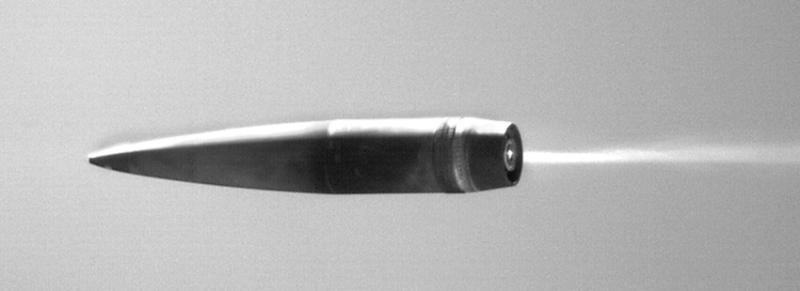Army researchers are seeking ways to give soldiers more control over the range and burn of propellants in rocket-assisted artillery rounds. U.S. Army photo.
PICATINNY ARSENAL, N.J., Nov. 23 (UPI) -- U.S. Army engineers are seeking to boost the range and power of artillery shells through the use of electronically responsive methodology.
The technology would be used to control the shell's energetic materials, such as propellants and explosives.
"If you can control the burn rate and energy output of a propellant with electric voltage, this opens a whole new capability," explained David Thompson, a chemical engineer and member of the research team at Picatinny Arsenal. "Right now, we're considering it (electrically-responsive energetics) for rocket propellants found in extended range artillery rounds."
Thompson works at the Armament Research, Development and Engineering Center, or ARDEC, at the arsenal, which is part of the U.S. Army Research, Development and Engineering Command at Aberdeen Proving Ground in Maryland.
The Army currently uses artillery rounds that have two different types of motors for their extended range propellants: base bleed motor, which gets some extended range over a normal round and burns right out of gun; the other is a rocket assist motor, which doesn't burn until it gets the top of its flight and increases the projectile's velocity.
"With electric voltage, you could use one motor that does both," Thompson said. "You could create a low-voltage, right out of the gun, and get that base-bleed effect, and then hit it with a high voltage and get the rocket-assist effect, ultimately increasing the range over that which either motor can provide on its own."
The Army's XM1128 artillery round (maximum range is about 18.6 miles) uses the base bleed motor, while the XM1113 , with a range of about 24.8 miles, uses the rocket-assist method.
The range of both would be increased through electronically responsive technology.
"A propellant's effectiveness can change in different environments, they (troops) have to compensate for temperature," Thompson said. ""Our idea was to use an electrical igniter with a propellant that we can control, allowing us to burn the propellant at different speeds and rates.
"We want to use the igniter to improve the round's performance in the cold, and maintain its performance in the heat, but also ensure that the performance is identical throughout. This way, the troops can fire the same thing and get a consistent result no matter what."















